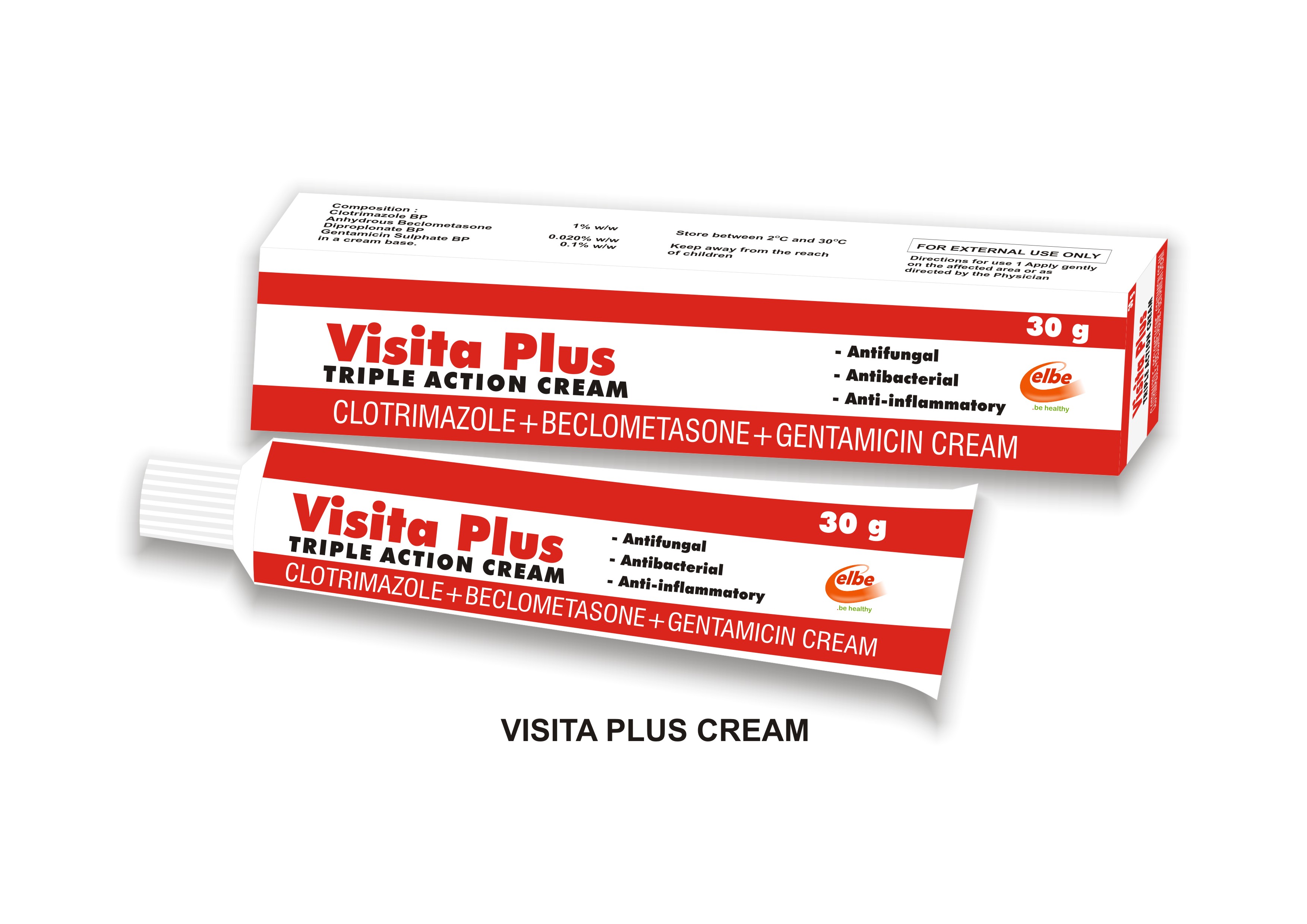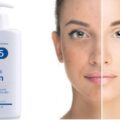Visita Plus Cream is used for bacterial infections, prevention of oral thrush, fungal skin infection of vagina, relief of itching, burning, cracking, and scaling associated with athlete’s foot, Jock itch and ringworm, allergic rhinitis, fungal infections of armpit and skin folds, treatment of jock itch, treatment of athlete’s foot, treatment of ringworm and other conditions. Visita Plus Cream may also be used for purposes not listed in this medication guide.
Visita Plus Cream contains Beclomethasone Dipropionate, Clotrimazole and Gentamicin Sulphate as active ingredients. Visita Plus Cream works by inhibiting the growth of fungi; suppressing both inflammatory cells and the release of inflammatory mediators; inhibiting the growth of bacteria;
Does Visita Plus Cream Lighten the Skin?
Using skin‐lightening compounds for a cosmetic purpose that are normally restricted to medical use or forbidden has become a world‐wide practice. Visita plus contains Beclomethasone Dipropionate belonging to a class of drugs known as corticosteroids. According to the Journal of Travel Medicine, this group of drugs are potent topical steroids with skin lightening potentials. Topical corticosteroids are used as skin lighteners due to their potent bleaching action, and also their anti-inflammatory activity, which can reduce the risk of dermatitis when used along with other irritating skin lightening agents.
There is no health benefit to skin bleaching. Results aren’t guaranteed and there’s evidence that skin lightening can result in serious side effects and complications. From a medical standpoint, there’s no need to lighten the skin. But if you’re considering skin bleaching, it’s important to understand the risks.
Skin bleaching reduces the concentration or production of melanin in the skin. Melanin is a pigment produced by cells called melanocytes. The amount of melanin in your skin is mostly determined by genetics. People with dark skin have more melanin. Hormones, sunlight, and certain chemicals also affect melanin production.
A number of countries have banned the use of skin bleaching products because of the dangers associated with them. In 2006, the Food and Drug Administration (FDA) also issued a notice that over-the-counter (OTC) skin bleaching products are not recognized as safe and effective. The products were deemed not safe for human use based on a review of evidence. Skin bleaching has been associated with a number of adverse health effects.
Side Effects Of Visita Plus Cream
According to the manufacturers of the product Elbe Pharma, Visita Plus cream is contra-indicated in patients who are sensitive to Beclometasone dipropionate, Clotrimazole, Gentamicin sulfate, other corticosteroids or imidazole, or to any other ingredients in this preparation.
Precautions/Warnings
General: Systemic absorption of topical corticosteroids has produced reversible hypothalamic-pituitary-adrenal (HPA) axis suppression, manifestation of Cushing’s syndrome, hyperglycemia, and glucosuria in some patients.
If irritation or hypersensitivity develops with the use of Visita Plus cream, treatment should be discontinued and appropriate therapy instituted.
Pregnancy category (US FDA): Category C: Should be used in pregnant women only if the potential benefit justifies the potential risk to the foetus.
Interactions
Drug interactions have not been reported. However, check with your doctor or pharmacist before use to ensure that the combination is safe. Especially, pay attention to cancer chemotherapy agents, other topical medications and vitamins.
Adverse Effects
The local adverse effect reported infrequently are burning, itching, irritation, dryness, folliculitis, hypertrichosis, acneiform eruptions, hypopigmentation, perioral dermatitis, allergic contact dermatitis, maceration of the skin, secondary peeling edema, pruritus, urticaria, and general irritation of the skin.
The misuse of topical corticosteroids has a huge impact on dermatological practice as it is responsible for a significant proportion of visits to dermatology clinics. It is a hydra-headed problem that needs multi-dimensional interventions, involving educational, legal and managerial approaches to overcome it. Education of the general public through media programs and introduction of continuing medical education programs for medical, paramedical personnel and pharmacists are probably the most important steps to be taken to create awareness about the hazards of misuse of topical corticosteroids. Secondly, legal approaches should include the enforcement of the existing legislation that potent topical corticosteroids cannot be sold over-the-counter and without the prescription of a qualified doctor. SEE: How to Spot a Fake Funbact A Cream and Original






